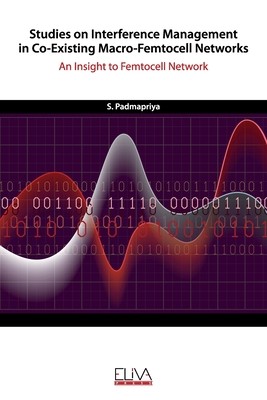
- We will send in 10–14 business days.
- Author: S Padmapriya
- Publisher: Eliva Press
- ISBN-10: 1952751780
- ISBN-13: 9781952751783
- Format: 15.2 x 22.9 x 1 cm, softcover
- Language: English
- SAVE -10% with code: EXTRA
Studies on Interference Management in Co-Existing Macro-Femtocell Networks (e-book) (used book) | bookbook.eu
Reviews
Description
Cellular communication has witnessed tremendous growth during the past couple of decades. It plays an inevitable role in day-today life and in modernizing the human society. Throughout the evolution of cellular networks, many standards have come into existence, in order to meet the growing demand of ubiquitous, high quality voice, data and multimedia services. Besides, next generation cellular networks are in the necessity to offer seamless services even at the cell-edges and indoor provinces where the requirement for the cellular services is never the less. Though there is a growing demand for higher data rate services every day, the conventional macrocell is unable to provide better coverage extension to cell-edge users. To handle indoor and outdoor traffic growth, the recent heterogeneous network has emerged with an answer in the form of smallcell technology. The large macrocell coverage is divided into many smallcells, thereby bringing the base station closer to the users. Deployment of many low power smallcells offer higher throughput to indoor network users and offload the voice and data traffics of macrocell network. Among the small cell family, femtocell network has gained significant importance towards future cellular networks. Eventually, most of the industry and research people concentrate in shaping the next generation heterogeneous network with femtocell technology. An investigation on femtocell technology reveals that the technology has got some challenges to be addressed. In practice, improper access mode selection, random and dense femtocell deployment and seamless mobility of macrouser has led to serious challenges like interference, backhaul bottleneck and handoff mechanisms respectively. This research work focuses on avoiding co-channel interference, which is a serious issue in coexisting macro-femtocell networks.
EXTRA 10 % discount with code: EXTRA
The promotion ends in 19d.18:08:40
The discount code is valid when purchasing from 10 €. Discounts do not stack.
- Author: S Padmapriya
- Publisher: Eliva Press
- ISBN-10: 1952751780
- ISBN-13: 9781952751783
- Format: 15.2 x 22.9 x 1 cm, softcover
- Language: English English
Cellular communication has witnessed tremendous growth during the past couple of decades. It plays an inevitable role in day-today life and in modernizing the human society. Throughout the evolution of cellular networks, many standards have come into existence, in order to meet the growing demand of ubiquitous, high quality voice, data and multimedia services. Besides, next generation cellular networks are in the necessity to offer seamless services even at the cell-edges and indoor provinces where the requirement for the cellular services is never the less. Though there is a growing demand for higher data rate services every day, the conventional macrocell is unable to provide better coverage extension to cell-edge users. To handle indoor and outdoor traffic growth, the recent heterogeneous network has emerged with an answer in the form of smallcell technology. The large macrocell coverage is divided into many smallcells, thereby bringing the base station closer to the users. Deployment of many low power smallcells offer higher throughput to indoor network users and offload the voice and data traffics of macrocell network. Among the small cell family, femtocell network has gained significant importance towards future cellular networks. Eventually, most of the industry and research people concentrate in shaping the next generation heterogeneous network with femtocell technology. An investigation on femtocell technology reveals that the technology has got some challenges to be addressed. In practice, improper access mode selection, random and dense femtocell deployment and seamless mobility of macrouser has led to serious challenges like interference, backhaul bottleneck and handoff mechanisms respectively. This research work focuses on avoiding co-channel interference, which is a serious issue in coexisting macro-femtocell networks.


Reviews